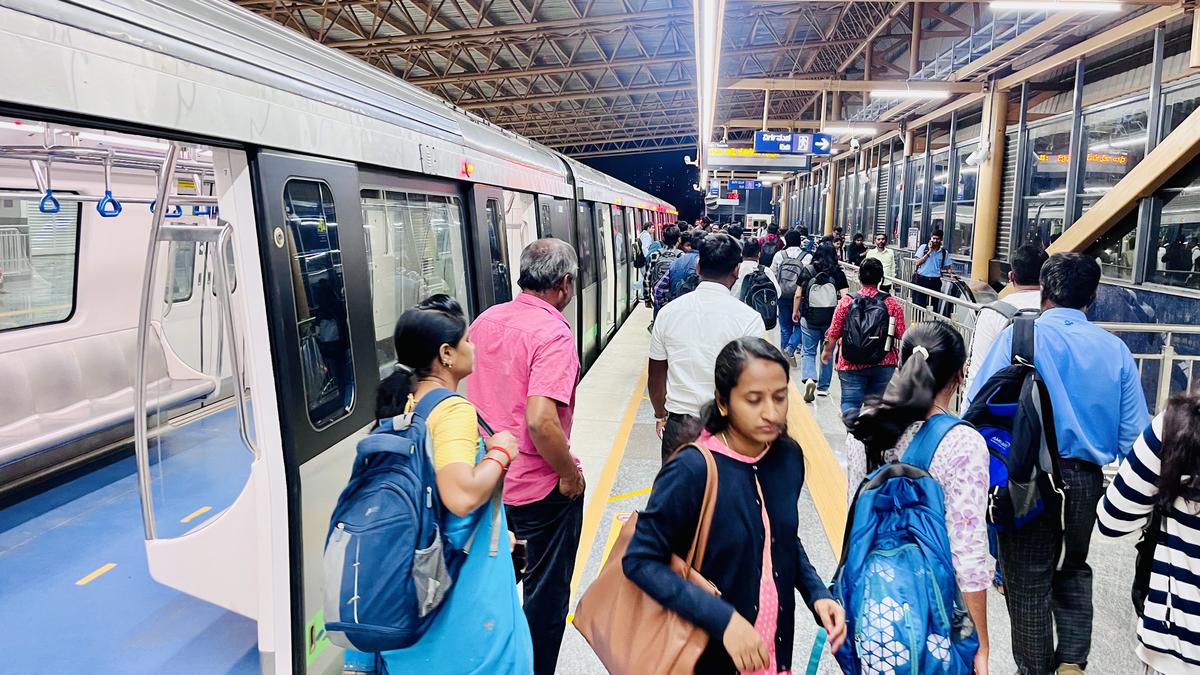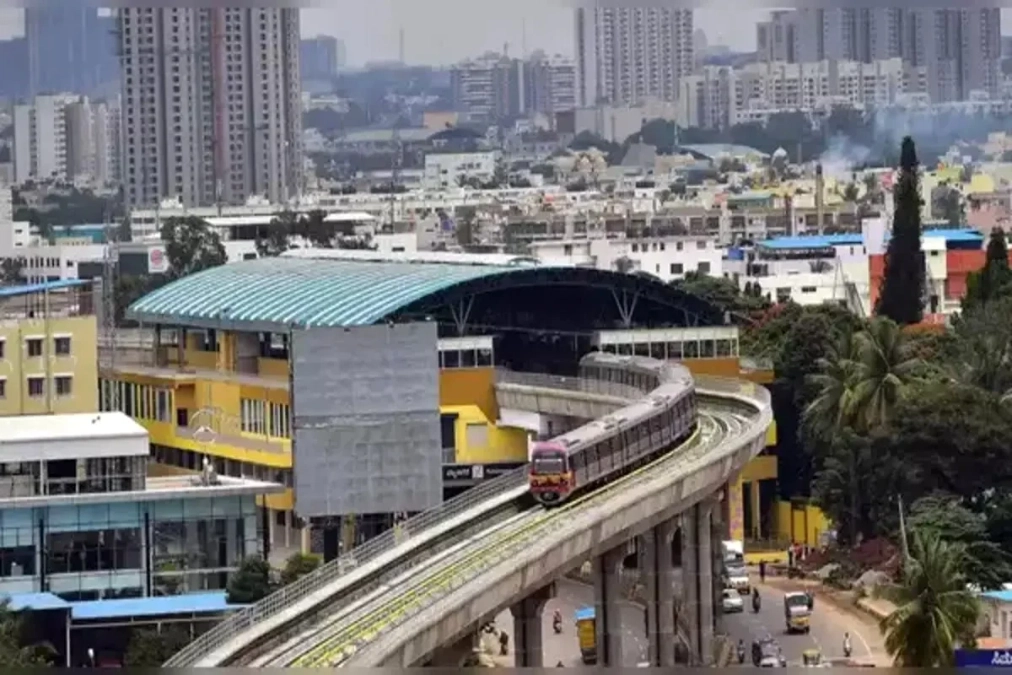The long-awaited Tumakuru Metro project has taken a significant step toward becoming a reality, according to Karnataka Deputy Chief Minister G. Parameshwara. Speaking at a press conference in Bengaluru, Parameshwara highlighted that the project has received key administrative approvals and that detailed planning is underway for the implementation phase. The metro is expected to address the growing transportation needs of Tumakuru, which has seen rapid urbanization and rising commuter traffic, particularly between Bengaluru and Tumakuru.
Parameshwara emphasized that the metro will not only reduce travel time but also ease congestion on highways connecting the industrial and educational hubs of Tumakuru. With the region witnessing increasing population growth and economic activity, public transport infrastructure has become a pressing need. The metro project is envisioned as a modern, sustainable solution, integrating advanced technology with eco-friendly designs to ensure minimal environmental impact while providing efficient commuter services.
Officials have also confirmed that feasibility studies, environmental assessments, and land acquisition plans are progressing as per schedule. Parameshwara stated that the project aims to adopt international standards in safety, accessibility, and passenger convenience. The metro corridor is expected to connect key residential, commercial, and industrial zones, enhancing connectivity for thousands of daily commuters and contributing to Tumakuru’s long-term economic and social development.

Benefits for Daily Commuters
The metro project promises to drastically cut travel times for residents who currently rely on overcrowded buses and private vehicles. Commuters will benefit from modern stations, digital ticketing, and frequent services, making daily travel more convenient and reliable.
Experts also note that improved public transport could encourage people to shift away from private vehicles, thereby reducing air pollution and traffic accidents along the Bengaluru-Tumakuru corridor.
The Tumakuru Metro project has been in discussion for several years, with previous proposals stalling due to funding and feasibility concerns. Parameshwara’s recent statement signals renewed political commitment and administrative focus, reassuring residents and businesses of tangible progress. The project is now moving past the planning stage, with preliminary designs and technical evaluations already underway to ensure the corridor aligns with urban growth patterns and commuter needs.
One of the key goals of the metro is to reduce dependency on private vehicles for daily commuting. Currently, the Bengaluru-Tumakuru route faces severe congestion, especially during peak hours, leading to extended travel times, higher fuel consumption, and increased pollution. The metro aims to provide a reliable, rapid alternative that can carry thousands of passengers efficiently, easing the burden on highways and improving overall quality of life for residents.
Parameshwara noted that the metro will adopt state-of-the-art technologies in rail systems, signaling, and operations management. Smart digital ticketing, automated train control, and modern station infrastructure are planned to enhance passenger convenience and operational efficiency. Officials are also exploring options for energy-efficient trains to reduce the project’s carbon footprint and align with Karnataka’s sustainability goals.
Land acquisition remains a critical phase for the project. Authorities have initiated surveys to identify required parcels, ensuring minimal displacement and fair compensation for affected residents. Environmental assessments are also ongoing, with strict compliance to safeguard local ecosystems and maintain green spaces wherever possible. Officials have pledged transparency and community engagement throughout this process to minimize disputes and delays.
The metro corridor is expected to connect major residential, commercial, and industrial hubs within Tumakuru city and the outskirts. By providing seamless connectivity to educational institutions, IT parks, and manufacturing zones, the project is anticipated to benefit students, professionals, and workers alike. This improved accessibility is likely to attract further investment and support economic diversification in the region.
Construction of the metro is projected to generate significant employment opportunities. From engineering and construction work to administrative and operational roles, thousands of jobs are expected to be created both directly and indirectly. Local contractors and suppliers are likely to benefit from the procurement of materials and services, providing a boost to the regional economy during the project’s implementation.


Economic and Social Implications
Beyond commuter convenience, the metro is expected to stimulate local businesses, attract investments, and create job opportunities during both construction and operational phases. Efficient transport infrastructure is seen as a catalyst for urban growth.
Parameshwara highlighted that integrating the metro with existing road and bus networks will create a seamless transport ecosystem, strengthening Tumakuru’s position as an emerging industrial and educational hub.
Urban planners suggest that the metro could transform Tumakuru’s public transportation landscape. Integration with existing bus networks and the development of feeder services to metro stations are planned to ensure last-mile connectivity. This holistic approach aims to make public transport a preferred mode of commuting, reducing road congestion and promoting sustainable urban mobility.
Safety and accessibility are central to the metro’s design. Stations will include ramps, elevators, tactile pathways, and emergency response systems to accommodate all passengers, including senior citizens and people with disabilities. Parameshwara highlighted that international best practices in safety management and disaster preparedness are being incorporated into the planning stages.
The project is also expected to improve air quality and reduce traffic-related emissions. By encouraging commuters to shift from personal vehicles to mass transit, the metro can contribute to lowering carbon emissions and alleviating urban pollution, aligning with broader environmental objectives and climate commitments of the state government.
Funding and financial planning for the metro are being finalized, with a combination of state, central, and possibly international investment sources. Officials have indicated that careful budget management and phased project execution will ensure timely completion while minimizing fiscal strain. Financial transparency is being emphasized to maintain public trust and investor confidence.
The metro is envisioned as a catalyst for urban modernization. Beyond transportation, it is expected to influence real estate development, commercial growth, and infrastructure improvements along the corridor. Improved connectivity can increase property values, stimulate local businesses, and encourage urban regeneration in underdeveloped areas of Tumakuru.
Parameshwara also highlighted that public feedback is being sought for station design, route planning, and service frequency. Engaging residents and commuters in decision-making ensures that the metro system is tailored to the needs of the community, enhancing user satisfaction and long-term adoption.
Experts suggest that the successful implementation of the Tumakuru Metro could serve as a model for other mid-sized cities in Karnataka. By demonstrating efficient planning, sustainable operations, and integration with existing transport networks, the project may set a benchmark for regional mass transit initiatives across the state.
Finally, authorities emphasized that the Tumakuru Metro is not just a transport project but a driver of socio-economic transformation. By providing efficient, safe, and environmentally responsible mobility solutions, the metro is expected to enhance quality of life, attract investment, and position Tumakuru as a forward-looking urban hub in Karnataka, bridging gaps between infrastructure, economy, and citizen welfare.
The Tumakuru Metro is expected to significantly reduce travel time between key residential and commercial areas, providing a reliable alternative to crowded buses and private vehicles. Commuters who currently spend hours on the road during peak traffic will benefit from faster, predictable travel, allowing for better work-life balance and increased productivity. The convenience of the metro is anticipated to encourage a cultural shift toward public transportation, promoting sustainable urban mobility.

Local businesses along the metro corridor are likely to see substantial growth. Improved connectivity can increase customer footfall, expand market reach, and attract new investments in retail, hospitality, and service sectors. Urban planners believe that metro stations will become hubs of economic activity, fostering small-scale entrepreneurship and boosting regional commerce, thereby creating a positive ripple effect on Tumakuru’s economy.
The project is also poised to have a transformative effect on real estate development. Residential and commercial properties near metro stations are expected to witness increased demand, encouraging planned urban expansion. Developers are likely to invest in modern housing and commercial complexes, contributing to the city’s infrastructure growth while ensuring better access to public transportation for residents.
Environmental benefits are another key aspect. By reducing dependency on private vehicles, the metro can lower carbon emissions, improve air quality, and decrease noise pollution along heavily congested corridors. The integration of energy-efficient trains and eco-friendly construction practices demonstrates the government’s commitment to sustainability, ensuring that development does not come at the cost of the environment.
The metro project is expected to foster social inclusion as well. Affordable, reliable public transport will enable students, daily wage workers, and senior citizens to travel conveniently, broadening access to education, employment, and healthcare. By connecting underserved areas to the city center, the metro will reduce inequality in mobility, allowing more residents to participate in the city’s economic and social life.
Finally, Parameshwara emphasized that the Tumakuru Metro is part of a long-term vision to modernize urban transport infrastructure across Karnataka. By creating a model for sustainable, efficient, and inclusive public transit, the project not only addresses immediate commuting challenges but also sets the foundation for future regional development. Once operational, it will stand as a testament to the state’s commitment to integrated urban planning, economic growth, and improved quality of life for its citizens.
The Tumakuru Metro is also expected to enhance regional connectivity by linking industrial zones, educational institutions, and residential neighborhoods more effectively. Improved accessibility can attract skilled professionals and students, stimulate innovation, and support the growth of local industries. By integrating modern transport solutions with urban planning, the project promises to transform Tumakuru into a smart, sustainable city that balances economic development with quality of life and environmental responsibility.
Follow: Karnataka Government
Also read: Home | Channel 6 Network – Latest News, Breaking Updates: Politics, Business, Tech & More

